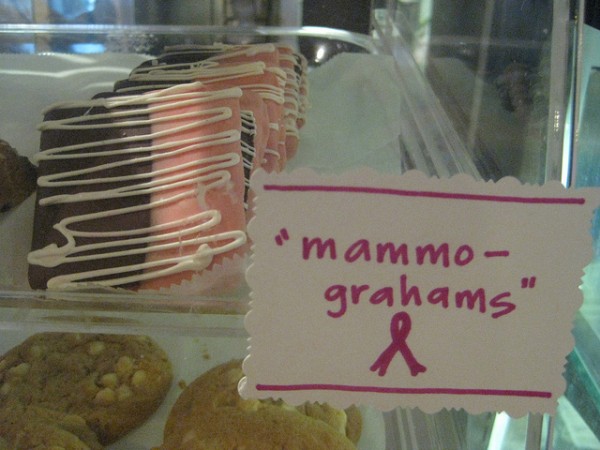
Originally posted October 13, 2015.
October brings cozy sweaters, Pumpkin Spice Lattes, and lots of pink for Breast Cancer Awareness Month. It’s a worthy campaign: approximately 1 in 8 women will receive a breast cancer diagnosis in her lifetime. But how has breast cancer gained such visibility when others—even other forms of cancer—plague the population at even higher numbers?
Breast cancer awareness campaigns have branded breast cancer through pink ribbons and other merchandise, making the disease not only highly visible, but also a commodity. The signature pink color connects breast cancer to traditional ideas of femininity, beauty, and morality, and allows family and friends to show support. Color aside, merchandise and freebies like cosmetics and small home appliances reinforce breast cancer’s symbolic ties to beautiful, domestic, heterosexual women as the primary sufferers. This is breast cancer’s “disease regime,” a system of institutional practices and styles of speech that shapes how patients experience it (Klawiter 2004, 851).
- Maren Klawiter. 1999. “Racing for the Cure, Walking Women, and Toxic Touring: Mapping Cultures of Action within the Bay Area Terrain of Breast Cancer.” Social Problems 46(1): 104-126.
- Maren Klawiter. 2004. “Breast Cancer in Two Regimes: The Impact of Social Movements on Illness Experience.” Sociology of Health and Illness 26(6): 845-874.
- Samantha King. 2008. Pink Ribbons, Inc. Breast Cancer and the Politics of Philanthropy. University of Minnesota Press.
Large-scale organizations like the Susan G. Komen foundation raise awareness, but often leave out marginalized identities that don’t fit a traditional feminine image. Groups like the Women & Cancer Walk provide spaces for those who don’t fit the mainstream definition of a “breast cancer patient.”
- Gayle Sulik. 2014. “#RETHINKPINK: Moving Beyond Breast Cancer Awareness.” SWS Distinguished Feminist Lecture. Gender and Society 28(5): 655-678.
- Gayle Sulik and Edyta Zierkiewicz. 2014. “Gender, Power, and Feminisms in Breast Cancer Advocacy: Lessons from the United States and Poland.” Journal of Gender and Power 1(1).
The specific image of the breast cancer patient affects who participates in activism and how they view their work for the cause. Many women volunteer for organizations like Komen as a way to connect with other survivors. Often this means that much of their work goes unnoticed, in part because they downplay their activism as trivial volunteering or “just being fair,” further reinforcing the gendered construction of the disease.
- Amy Blackstone. 2004. “’It’s Just About Being Fair’: Activism and the Politics of Volunteering in the Breast Cancer Movement.” Gender and Society 18(3): 350-368.
For more on breast cancer awareness, check out posts at Feminist Reflections, Sociological Images, and two of our recent Discoveries.

Comments 1
#whatiwore 2018w14 + Sunday links – Un Armario Verde — May 26, 2018
[…] would be the fight against breast cancer, with all the needed caveats about pink-washing – 1, 2, 3, 4, 5, 6, […]